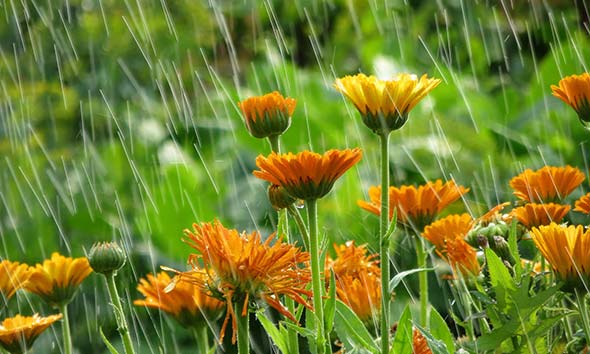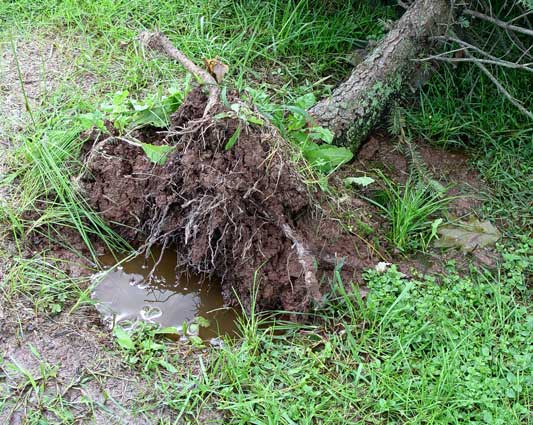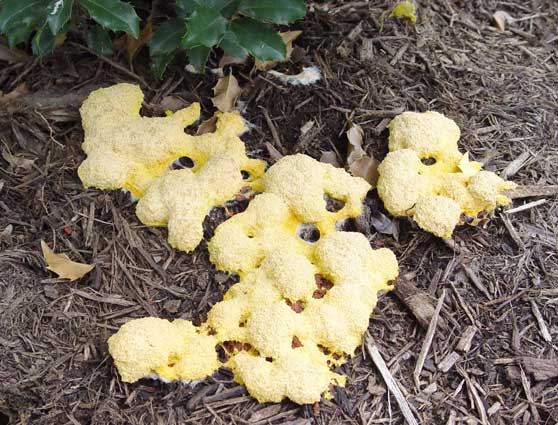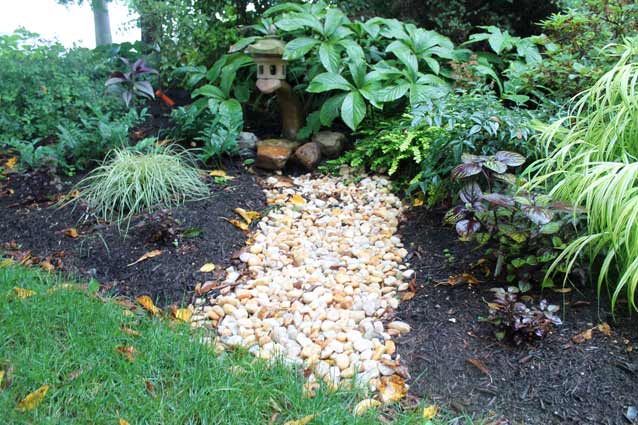Is That New Boxwood Blight Something to Worry About?
Learn more about Boxwood Blight, the disease that has been taking over the popular hedging shrub, and how you can prevent, identify, and stop the disease.

Gardens need rain, but too much rainfall can cross the line. Excessive downpours or extended periods of wetness can be harmful to garden and landscape plants.
Drought is such a common gardening threat that it gets a lot of attention. Far less attention is paid, though, to what happens when too much rain comes down, as it did this summer in much of the country. Plants that wash away or that rot in soggy soil are the most immediate and obvious problems. But a handful of more subtle, lingering, and long-term problems also can follow excess wetness.
Some plants, such as lavender (Lavandula spp), wormwood or artemisia (Artemisia spp.), lamb’s ears (Stachys byzantina), and carnations and other dianthus (Dianthus spp.) have little tolerance for wet soil and can die after just a day or two of sogginess. In fact they tolerate drought. Others are more flexible. Daylilies (Hemerocallis spp), many iris (Iris spp.), lilyturf and mondo grass (Liriope spp. & Ophiopogon spp.) may not die, but some of the roots may rot, putting the plant at risk of other setbacks, such as intense heat, intense cold, or a future dry spell. Damage or plant death may not show up until months later. The long-term outcome depends on the plant, how long it was sitting in soggy soil, and whether the plant sidesteps setbacks while roots regrow. Most needled evergreens are especially vulnerable but do not turn brown and drop needles for weeks or even months. Think about how a Christmas tree stays green for long after it’s been completely disconnected from its roots.

The most obvious and short-term effect of too much rain is the rotting of plant roots in soggy soil. George Weigel
There’s not much gardeners can do about partial root damage. The solution is up-front: a. Select and stick with plants tolerant of wet conditions in wet areas. b. Improve drainage by working compost into the soil at planting time, or creating raised beds. c, After the fact, don’t walk on soggy soil (that compacts it and makes it even more prone to future flooding). d. Remove excess mulch from around plant stems and tree trunks after the soil drains (2” to 3” is optimal), and keep the soil moist during ensuing dry spells.
An overabundance of moisture leads to widespread spotting, streaking, and disease-related browning of leaves, mostly caused by fungal diseases that thrive in warm, humid or wet conditions. The good news is that plants usually “grow through” most leaf diseases, although they may look bad and/or drop leaves prematurely. Don’t assume a tree or shrub has died if it drops its leaves early this year or if a perennial plant has turned yellow, brown, or wilted back to the ground. Wait until next spring to see if the plants and branches push out new growth. In the meantime, rake and remove any fallen, diseased leaves in the trash, not on the compost pile. That’ll remove most disease spores that could re-infect the plant next year. If you suspect a more serious problem or have a low tolerance for damage, diagnose the specific problem (Cooperative Extension offices are helpful) and consider a fungicide or other control if it’s warranted.

Slime mold often grows in wet mulch. George Weigel
Lawns are usually resilient to flooding, but they can suffer from rust, mildew, and other fungal diseases along with any other plant. Again, treatments usually aren’t necessary unless the problem is severe and your tolerance is low. Wet lawns often produce assorted mushroom-like growths; damp, mulched beds may produce blob-like growths called slime mold that start out yellow-orange and turn black. Slime mold is harmless to pets and people but can be raked off if you don’t like the look of it. Most lawn mushrooms are harmless, but a few are poisonous. Remove them if you’re not sure, or have pets or young children who might try to sample the growths.
Sometimes leaves turn yellow or discolor from lack of nutrition, not disease. This often happens after a soggy spell because the microorganisms that break down root-feeding nutrients in the soil have suffocated. This problem usually corrects itself, but if you’re seeing plants with poor color that were rich and green before the rain, consider a fertilizer treatment. Products containing nitrogen and iron are usually most effective.
One of the worst post-soggy signs is trees that have started to lean. That’s a sign that the tree is losing root support, possibly from a combination of soggy soil that rotted roots as well as the weight of water and wind on wet leaves. Call a tree professional ASAP to evaluate large leaners, and stay well away from them in the meantime, since they could fall at any time. For small, non-hazardous leaners, it’s worth trying to salvage them by pushing them back upright and staking them for up to a year.
If you haven’t already done so, check for soil that eroded or was deposited elsewhere following flooding, runoff, or heavy drainage from downspouts. A common threat is the exposure of tree and shrub roots from erosion. Recover exposed roots as soon as possible before they dry out and die. If possible, return the washed-out soil or mulch to its original spot. Otherwise, you’ll have to buy and replace it. Washed-away soil and mulch can pose a problem too, especially if it’s piled against the trunks of woody plants or deeply over the roots. Soil or mulch against trunks can rot the bark, while the sudden addition of 3 or more inches of soil or mulch can have the same effect on roots as planting too deeply (i.e. death from lack of oxygen).

Moderate the force of water running out down spouts by installing a stone bed or a splash block at the base. George Weigel
Heavy rains give good clues on avoiding trouble in the future. Look for depressions where water stood for days and level it out with additional soil. Look where excess, unwanted water flowed, and correct it by adding drain pipes, dry streambeds, or swales to redirect it to a more desirable area. Better yet, consider adding a rain garden to capture and drain runoff instead of letting it wash away. These can be most attractive and environmentally friendly. For downspouts that blew soil or mulch out into the yard, mitigate the force by adding a bed of stones or a splash block at the bottom. For areas with poor drainage, make note to build raised beds before planting there or plant only plants that can withstand periodic “wet feet”.